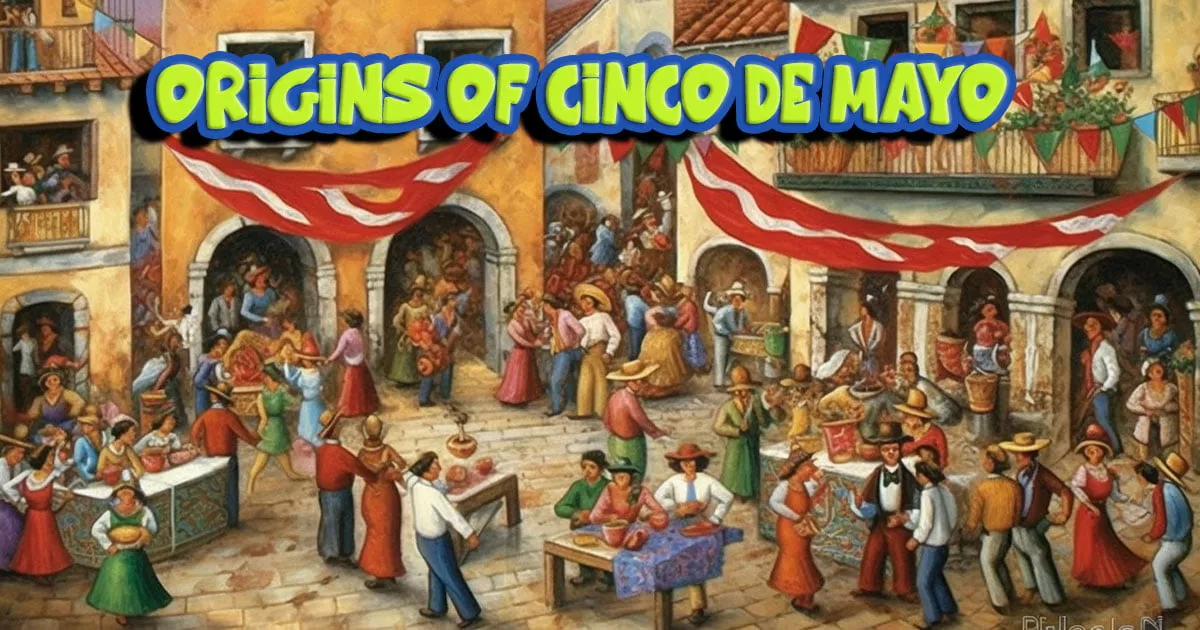

I am blessed to live in a region with a substantial Latino community, and for many Mexican Americans, Cinco de Mayo is a significant day of celebration. As such, it was easy to choose a topic for my blog today. Interestingly, Cinco de Mayo is not widely celebrated in Mexico, except in a specific region, but it enjoys immense popularity in the United States. As a history enthusiast, I find this holiday intriguing, so let’s delve into its fascinating story.
Cinco de Mayo, or the 5th of May, is a holiday that originated in Mexico but has become widely celebrated in the United States as well. It commemorates the Mexican army’s unlikely victory over French forces at the Battle of Puebla on May 5, 1862. While not considered a major holiday in Mexico, it has evolved into a significant celebration of Mexican culture and heritage, particularly in areas with large Mexican-American populations.
The origins of Cinco de Mayo can be traced back to the turbulent period in Mexican history following the Mexican-American War (1846-1848) and the Reform War (1858-1859). These conflicts left the Mexican government in financial disarray, and in 1861, President Benito Juárez declared a temporary suspension of debt payments to foreign governments.

France, under Napoleon III, took this opportunity to expand its empire and invaded Mexico in 1861. While the French army was better equipped and larger than the Mexican forces, the Mexicans were able to achieve a surprising victory at the Battle of Puebla on May 5, 1862, under the leadership of General Ignacio Zaragoza.
Although the French eventually overtook Mexico and installed Maximilian I as emperor, the Mexican victory at the Battle of Puebla became a symbol of national pride and resistance against foreign intervention. The holiday was first celebrated in the state of Puebla but gradually gained popularity in other parts of Mexico and the United States.
In the United States, Cinco de Mayo gained traction in the 1960s and 1970s, as Mexican-American activists embraced the holiday as a way to promote cultural pride and raise awareness of their contributions to American society. Over time, it has evolved into a broader celebration of Mexican culture, featuring parades, music, food, and other cultural activities.
The Battle of Puebla took place on May 5, 1862, during the French intervention in Mexico. The conflict occurred in the city of Puebla, located in the southeastern part of the country, about 80 miles east of Mexico City. The battle was fought between the Mexican army, led by General Ignacio Zaragoza, and the invading French forces, commanded by General Charles Ferdinand Latrille, Comte de Lorencez.

The French intervention in Mexico began in 1861, when Napoleon III saw an opportunity to establish a French sphere of influence in the Americas, taking advantage of the political instability and financial crisis in Mexico. After President Benito Juárez announced a moratorium on the repayment of foreign debts, France, along with Britain and Spain, sent naval forces to Veracruz to demand repayment. Although Britain and Spain withdrew their forces after negotiations, France decided to proceed with an invasion.
By the time of the Battle of Puebla, the French forces had advanced inland and aimed to capture Mexico City. The Mexican army, outnumbered and poorly equipped compared to the French, prepared to defend Puebla, a strategic location on the road to the capital.
On May 5, 1862, the French army, numbering around 6,000 to 8,000 soldiers, attacked the Mexican positions near the forts of Loreto and Guadalupe on the outskirts of Puebla. The Mexican forces, comprising about 4,000 soldiers and militia, were positioned on a hill, providing them with a defensive advantage.
Despite the disparity in numbers and resources, the Mexican forces put up a fierce resistance, repelling several French attacks. The battle lasted for several hours, with both sides suffering casualties. Eventually, a strong counterattack by the Mexican cavalry forced the French to retreat. The French suffered around 500 casualties, while Mexican losses were estimated at around 100.
The victory at Puebla was a significant morale boost for the Mexican people and reinforced their resolve to resist the French invasion. Although it did not halt the French advance, and Mexico City was eventually captured in 1863, the battle became a symbol of Mexican bravery and patriotism. The French intervention ultimately ended in 1867 with the execution of Emperor Maximilian I and the restoration of the Mexican Republic.
Today, the Battle of Puebla is remembered through the celebration of Cinco de Mayo, which has become an important symbol of Mexican culture and heritage, particularly in the United States.

Modern celebrations of Cinco de Mayo in the United States have evolved into a vibrant and colorful display of Mexican-American culture and heritage. While the holiday’s origins are rooted in the Battle of Puebla, the way it is observed today in the US largely focuses on the appreciation and promotion of Mexican culture, rather than the historic event itself. Here are some ways in which Cinco de Mayo is celebrated across the country:
While Cinco de Mayo has become a popular celebration of Mexican culture in the United States, it is not as widely observed in Mexico itself, where the holiday is mainly commemorated in the state of Puebla and by some Mexican communities abroad. In recent decades the holiday has taken on a much larger meaning. It’s not about winning a battle many years ago, it’s about Mexican heritage pride and we are all invited.